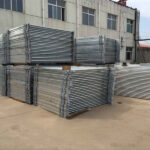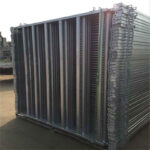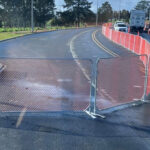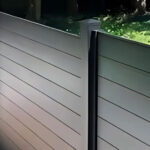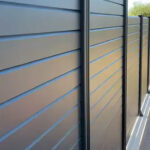When it comes to managing your flock effectively, selecting the right Schafpaneele is crucial for Australian farmers. These versatile tools play a vital role in sheep handling, providing safety, efficiency, and flexibility in various farm operations. In this comprehensive guide, we’ll explore expert tips to help you choose the best Australia sheep panels for your specific needs.
Understanding the Importance of Quality Sheep Panels
Sheep panels are essential components of any successful sheep farming operation. They serve multiple purposes, including:
- Containing and controlling sheep movement
- Facilitating safe and efficient handling during shearing, vaccinations, and other procedures
- Creating temporary or permanent enclosures
- Assisting in loading and unloading sheep for transport
Investing in high-quality sheep panels can significantly improve your farm’s productivity and reduce stress on both animals and handlers. Let’s dive into the key factors to consider when selecting the best panels for your operation.
Material Matters: Galvanized Steel for Durability
One of the most critical aspects to consider when choosing sheep panels is the material they’re made from. In Australia’s harsh climate, durability is paramount. Galvanized steel is the gold standard for sheep panels due to its:
- Korrosionsbeständigkeit
- Strength and longevity
- Low maintenance requirements
- Ability to withstand harsh weather conditions
When evaluating panels, look for those constructed from heavy-duty galvanized steel. This ensures your investment will stand the test of time and provide reliable service for years to come.
Panel Size and Configuration
The size and configuration of your sheep panels can greatly impact their effectiveness and versatility. Consider the following factors:
- Height: Panels should be tall enough to prevent sheep from jumping over. A standard height of 900mm to 1200mm is typically sufficient for most breeds.
- Length: Common panel lengths range from 1.8m to 3.6m. Longer panels can be more efficient for creating large enclosures, while shorter panels offer greater flexibility in tight spaces.
- Bar spacing: Ensure the spacing between horizontal bars is appropriate for your sheep size. Typically, 100mm to 150mm spacing works well for most adult sheep.
- Number of bars: More horizontal bars provide increased strength and prevent smaller lambs from slipping through. Look for panels with 6-8 bars for optimal security.
- End frames: Sturdy end frames with support legs enhance stability and make it easier to connect panels.
By carefully considering these factors, you can choose panels that best suit your specific flock and farm layout.
Portability and Ease of Use
For many Australian farmers, the ability to quickly set up and move sheep panels is crucial. Look for panels that offer:
- Lightweight yet durable construction
- Easy-to-use connection systems (e.g., drop pins or quick-connect couplers)
- Stackable design for efficient storage and transport
- Compatibility with gates and other accessories
Panels that are easy to handle and reconfigure will save you time and effort in your daily operations.
Safety Features for Sheep and Handlers
The safety of both your sheep and handlers should be a top priority when selecting panels. Consider these important safety features:
- Smooth, rounded edges to prevent injuries
- No protruding parts that could catch on wool or clothing
- Stable design to prevent tipping, even when sheep push against the panels
- Non-slip footing for secure placement on various surfaces
Panels with these safety features will help minimize the risk of accidents and injuries during handling.
Vielseitigkeit und Anpassungsfähigkeit
The best sheep panels are those that can serve multiple purposes on your farm. Look for panels that offer:
- Compatibility with various gates and accessories
- Ability to create both straight lines and curves
- Options for creating corners and joining at different angles
- Potential for use with other livestock (e.g., cattle or goats)
Versatile panels will provide greater value for your investment and adapt to your changing needs over time.
Cost Considerations and Long-Term Value
While it may be tempting to opt for the cheapest sheep panels available, it’s essential to consider the long-term value of your investment. Higher-quality panels may have a higher upfront cost but can offer:
- Longer lifespan and durability
- Reduced maintenance and replacement costs
- Improved efficiency in handling operations
- Better resale value
When evaluating prices, consider the total cost of ownership over the expected lifespan of the panels, rather than just the initial purchase price.
Australian Standards and Compliance
Ensure that the sheep panels you choose meet or exceed relevant Australian standards for livestock equipment. This includes:
- Compliance with animal welfare guidelines
- Meeting workplace health and safety requirements
- Adherence to any local regulations or industry best practices
Choosing compliant panels helps protect you legally and ensures you’re providing the best possible care for your animals.
Expert Recommendations for Specific Needs
Different farming operations may require specialized panel configurations. Here are some expert recommendations for specific situations:
- Shearing sheds: Opt for panels with tighter bar spacing and extra stability to contain freshly shorn sheep.
- Lambing areas: Choose panels with adjustable lower bars or lamb-proof mesh to prevent newborns from escaping.
- Loading ramps: Look for panels with reinforced construction and non-slip surfaces to ensure safe loading and unloading.
- Rotational grazing: Consider lightweight, easily movable panels for creating temporary paddocks.
- Permanent yards: Invest in heavy-duty panels with secure anchoring systems for long-term installations.
By tailoring your panel choices to your specific needs, you can optimize your sheep handling efficiency and effectiveness.
Maintenance and Care Tips
To get the most out of your investment in quality sheep panels, follow these maintenance and care tips:
- Regularly inspect panels for signs of wear or damage
- Clean panels after use, especially if exposed to manure or chemicals
- Store panels in a dry area when not in use to prevent rust
- Lubricate moving parts (e.g., hinges on gates) periodically
- Address any bent or damaged components promptly to prevent further issues
Proper maintenance will extend the life of your panels and ensure they remain safe and effective for years to come.
Where to Buy Australia Sheep Panels
When it comes to purchasing high-quality sheep panels in Australia, you have several options:
- Agricultural supply stores: Many local farm supply shops carry a range of sheep handling equipment, including panels.
- Online retailers: Websites specializing in farm equipment often offer a wide selection of panels with convenient shipping options.
- Direct from manufacturers: Some panel manufacturers sell directly to farmers, potentially offering better prices and customization options.
- Farm auctions and sales: You may find good deals on used panels at farm auctions or clearance sales.
- Livestock equipment specialists: Companies focusing specifically on sheep and cattle handling equipment can provide expert advice and high-quality products.
When choosing a supplier, consider factors such as reputation, customer service, warranty options, and after-sales support.
Conclusion: Making the Right Choice for Your Farm
Selecting the best Australia sheep panels for your farm is a crucial decision that can significantly impact your operation’s efficiency and success. By considering factors such as material quality, size and configuration, portability, safety features, versatility, and long-term value, you can make an informed choice that meets your specific needs.
Remember that investing in high-quality panels is an investment in your farm’s productivity and your animals’ well-being. Take the time to research your options, consult with experts if needed, and choose panels that will serve you well for years to come.
With the right sheep panels in place, you’ll be well-equipped to handle your flock safely and efficiently, no matter what challenges come your way in the dynamic world of Australian sheep farming.
FAQs
What is the ideal height for sheep panels?
The ideal height for sheep panels typically ranges from 900mm to 1200mm, depending on the breed and size of your sheep. This height is generally sufficient to prevent most sheep from jumping over while still allowing easy access for handlers.
How many sheep can a standard panel contain?
The number of sheep a standard panel can contain depends on various factors, including panel size, sheep breed, and the purpose of containment. As a general rule, allow about 0.5 to 1 square meter per sheep for short-term holding. For longer periods, more space may be necessary to ensure animal welfare.
Are there any alternatives to galvanized steel panels?
While galvanized steel is the most common and durable material for sheep panels, alternatives include aluminum (lighter but less durable) and plastic (affordable but less sturdy). However, for most Australian farming conditions, galvanized steel remains the preferred choice due to its strength and longevity.
How often should I replace my sheep panels?
With proper care and maintenance, high-quality galvanized steel sheep panels can last 15-20 years or more. However, individual panels may need replacement sooner if they sustain damage or wear. Regular inspections can help you identify when replacement is necessary.
Can I use the same panels for both sheep and cattle?
While some panels are designed for multi-species use, it’s generally best to use panels specifically designed for sheep. Cattle panels often have wider bar spacing that may allow smaller sheep or lambs to escape. If you need to handle both species, consider investing in separate panel sets or look for versatile options designed for multiple livestock types.



